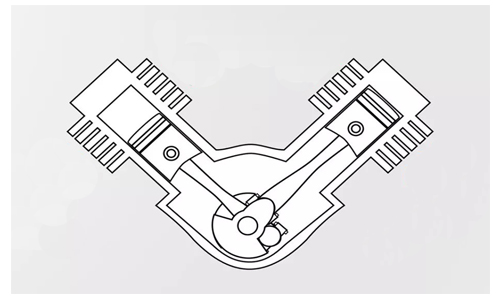V-type engine three types of connecting rod
2021-05-11
For V-type engines, the connecting rods of the left and right cylinders are mounted on the same crank pin, and their structure varies with the type of installation.

(1) Parallel connecting rod
Two identical connecting rods are installed side by side on the same crank pin one after the other. The connecting rod structure is basically the same as the connecting rod of the above-mentioned in-line engine, except that the width of the big head is slightly smaller. The advantage of the parallel connecting rods is that the front and rear connecting rods can be used in common use, and the piston movement rules of the left and right rows of cylinders are the same. The disadvantage is that the two rows of cylinders must be staggered a certain distance along the longitudinal direction of the crankshaft, which increases the length of the crankshaft and the engine.
(2) Primary and secondary connecting rods
One main connecting rod and one auxiliary connecting rod form the main auxiliary connecting rod, and the auxiliary connecting rod is hinged on the main connecting rod body or the main connecting rod cover by a pin shaft. One row of cylinders is equipped with a main connecting rod, and the other row of cylinders is equipped with an auxiliary connecting rod, and the main connecting rod is installed on the crank pin of the crankshaft. The main and auxiliary connecting rods cannot be interchanged, and the auxiliary connecting rod acts on the main connecting rod to add bending moment. The movement law and top dead center position of the pistons in the two cylinders are not the same. In the V-type engine with the main and auxiliary connecting rods, the two rows of cylinders do not need to be staggered, so the length of the engine will not be increased.
(3) Fork connecting rod
It means that the big end of the connecting rod in one row of cylinders is fork-shaped; the connecting rod in the other row of cylinders is similar to the ordinary connecting rod, but the width of the big end is smaller, and it is generally called the inner connecting rod. The advantage of the fork-shaped connecting rod is that the movement rules of the pistons in the two rows of cylinders are the same, and the two rows of cylinders do not need to be staggered. The disadvantage is that the structure of the large end of the fork-shaped connecting rod is complicated, the manufacture is more difficult, the maintenance is inconvenient, and the rigidity of the large end is poor.